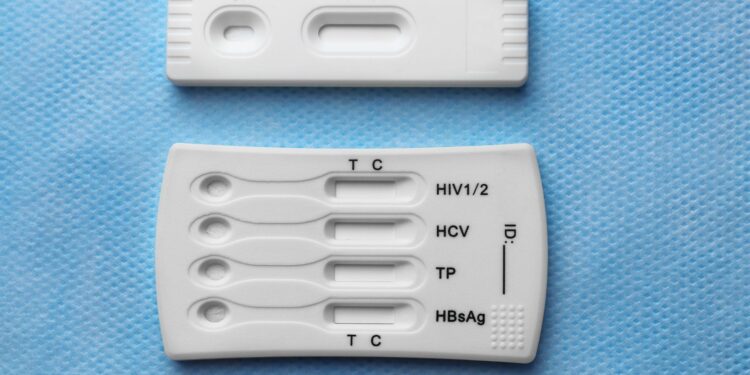Sida Test Questions
If you’re preparing for a sida test, you may have some burning questions about the process. In this article, I’ll address the most common inquiries and provide you with the knowledge you need to approach your test with confidence. From understanding the purpose of sida testing to knowing what to expect during the procedure, I’ll cover it all. So, let’s get started and answer those sida test questions that have been on your mind.
Understanding The SIDA Test
What is The SIDA Test?
The SIDA test, also known as the SIDA screening, is a crucial diagnostic tool used to detect the presence of sida antibodies in the body. Sida, also commonly referred to as HIV (Human Immunodeficiency Virus), is a serious viral infection that attacks the immune system, making individuals more susceptible to various illnesses and infections. The SIDA test plays a crucial role in diagnosing and managing this condition.
Who Needs to Take The SIDA Test?
The SIDA test is recommended for individuals who believe that they may have been exposed to the virus, either through unprotected sexual contact, sharing needles, or other high-risk behaviors. Additionally, individuals who are part of high-risk groups, such as sex workers, intravenous drug users, or those with multiple sexual partners, are strongly encouraged to undergo regular SIDA testing.
Importance of The SIDA Test
The SIDA test plays a crucial role in both individual and public health. Here are a few reasons highlighting the importance of undergoing regular SIDA testing:
- Early detection: The SIDA test allows for early detection of the virus, enabling individuals to seek appropriate medical care and support. Early diagnosis is essential for managing the condition effectively and preventing further transmission to others.
- Prevention: Knowing one’s SIDA status is vital for practicing safe behaviors and taking necessary precautions to prevent the spread of the virus. It empowers individuals to make informed decisions regarding sexual activity, contraceptive methods, and needle-sharing practices.
- Treatment: Early diagnosis through the SIDA test facilitates timely initiation of antiretroviral therapy (ART), which can significantly slow down the progression of the virus and improve the individual’s overall health outcomes. Moreover, regular SIDA testing allows healthcare professionals to monitor the effectiveness of treatment and make necessary adjustments if needed.
- Preventing mother-to-child transmission: Pregnant women who undergo SIDA testing can receive appropriate medical care and interventions to prevent the transmission of the virus to their unborn child. With the right interventions, the risk of transmission can be significantly reduced.

Preparing For The SIDA Test
Study Materials For The SIDA Test
When it comes to preparing for the SIDA test, having the right study materials is key. There are several resources available that can help you familiarize yourself with the test content and format. Some of the study materials that I recommend for the SIDA test include:
- Official SIDA Test Preparation Guides: These guides are designed specifically to help you prepare for the SIDA test. They cover all the important topics and provide practice questions to test your knowledge.
- Online Resources: There are many websites that offer free study materials for the SIDA test. These resources can include practice questions, study guides, and even video tutorials to help you better understand the concepts.
- Books and Study Guides: There are various books and study guides available in the market that can aid in your SIDA test preparation. These resources often provide comprehensive coverage of the test topics and offer practice questions for self-assessment.
Recommended Study Techniques
To make the most of your SIDA test preparation, it is important to adopt effective study techniques. Here are some techniques that I have found to be helpful:
- Create a Study Schedule: Designing a study schedule and sticking to it can help you stay organized and ensure that you cover all the necessary topics before the test date.
- Break Down the Content: Rather than trying to study everything at once, break down the content into smaller, manageable chunks. This will make it easier for you to grasp the information and remember it during the test.
- Take Regular Breaks: Taking breaks during your study sessions can actually improve your focus and retention. A quick walk or a few minutes of relaxation can help you recharge and stay productive.
- Utilize Flashcards: Flashcards are a great tool for memorizing key concepts and definitions. Create flashcards for important terms and concepts and review them regularly to reinforce your understanding.
- Practice Active Learning: Actively engaging with the material can greatly enhance your understanding and retention. Instead of passively reading, try to summarize the information in your own words or teach it to someone else.
Conclusion
Having accurate information about sida testing is crucial for individuals to take control of their health and contribute to the prevention and management of sida. In this article, I have addressed common questions and debunked myths surrounding sida testing. I have provided up-to-date information on the different types of sida tests, who needs to take the test, and the importance of regular testing. Understanding the importance of the SIDA test and undergoing regular testing empowers individuals to take charge of their health and contribute to the overall prevention and management of sida. By staying informed and proactive, we can work towards a future free from the burden of sida.














